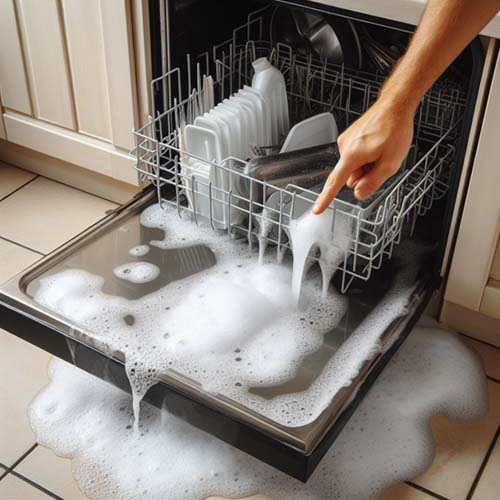In this article, we will explore the common reasons behind a dishwasher not drying and provide practical solutions to fix miele dishwasher issues.
Common Reasons for Dishwasher Not Drying

1. Insufficient Heat
Problem: One of the primary culprits behind a dishwasher’s poor drying performance is insufficient heat. If your dishwasher is not reaching the required temperature, your dishes won’t dry effectively.
Signs: Dishes are still wet at the end of the cycle, and there’s little to no steam inside the dishwasher.
2. Overloading the Dishwasher
Problem: Overcrowding the dishwasher prevents proper air circulation, hindering the drying process. When dishes are stacked too closely, water droplets can’t evaporate effectively.
Signs: Water droplets form on dishes, especially those in the middle of the rack. Overloaded racks may also obstruct the detergent dispenser.
3. Wrong Detergent or Rinse Aid
Problem: Using the wrong detergent or lacking rinse aid can result in subpar drying performance. Some detergents are formulated specifically for dishwashers with drying functions.
Signs: Dishes remain wet, and there might be detergent residue on glassware. Drying performance is inconsistent.
4. Clogged Dishwasher Filter
Problem: A clogged dishwasher filter can impede water drainage, causing water to pool and affecting the drying process.
Signs: Puddles of water in the bottom of the dishwasher after the cycle ends. Dishes are still wet.
5. Malfunctioning Heating Element
Problem: If the heating element is damaged or malfunctioning, the dishwasher won’t generate enough heat to dry the dishes effectively.
Signs: Dishes are cool to the touch, and the heating element may show visible damage.
Diagnostic Steps for Drying Issues
Before you jump to conclusions, follow these diagnostic steps to pinpoint the cause of the problem:
- Check the heating element for visible damage.
- Ensure proper loading of dishes with enough space between items.
- Verify that you’re using the right detergent for drying.
- Clean the dishwasher filter.
- Run a diagnostic test to check the heating element’s functionality.
Troubleshooting and Solutions
- Adjusting Heat Settings: If your dishwasher allows, adjust the heat settings to a higher temperature to promote better drying.
- Proper Loading Techniques: Adopt correct loading techniques to ensure that dishes are evenly spaced for efficient drying.
- Detergent and Rinse Aid Choices: Use dishwasher detergents designed for drying and consider adding rinse aid to boost drying performance.
- Cleaning the Dishwasher Filter: Regularly clean the dishwasher filter to prevent water drainage issues and promote better drying.
- Testing and Replacing the Heating Element: If the heating element is malfunctioning, consider professional assistance to test and, if needed, replace the element for optimal drying.
Preventive Maintenance
To avoid dishwasher drying issues in the future, consider the following preventive maintenance tips:
Regular Cleaning and Maintenance
- Perform routine maintenance tasks like cleaning the dishwasher filter and inspecting the heating element.
Benefits of Rinse Aid
- Rinse aid can significantly enhance the drying process. Add it to your dishwasher to maintain sparkly, dry dishes.
Dealing with Hard Water
- If you have hard water, consider using water softeners or specialized detergents for hard water areas.
Loading Tips for Better Drying
- Proper loading techniques ensure that dishes receive adequate air circulation, leading to better drying results.